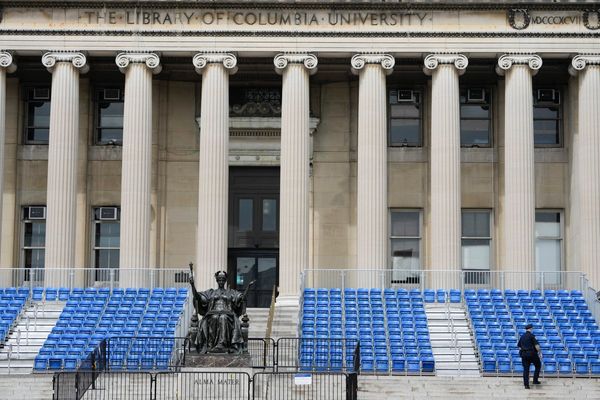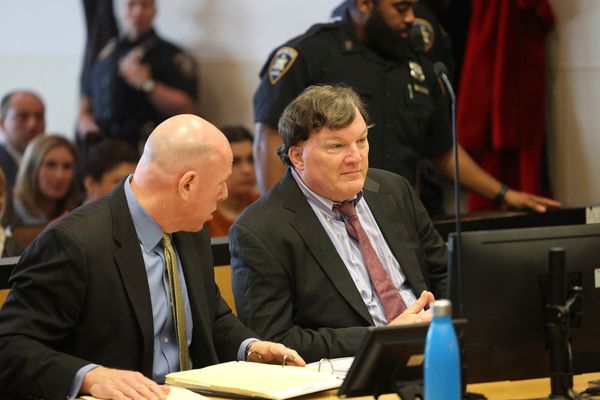PHILADELPHIA — Lead contamination is found in drinking water across city schools, an analysis of Philadelphia School District data found, and drinking fountains should be removed system-wide, advocates say.
Citywide, 61% of water sources tested in schools contained lead, and 98% of tested schools had some lead-containing water, according to a new study using publicly available district data.
District officials disputed the report, saying it was “not an accurate reflection of the water quality that students and staff in our district are accessing each and every day.”
Monica Lewis, a district spokesperson, said in a statement that the school system “is fully committed to supporting clean, safe and welcoming learning environments for every student and staff member — and that includes providing access to drinking water which meets the city of Philadelphia’s rigorous lead-in-water regulations, and proactively preventing access to any drinking water in any district-owned building that does not meet city of Philadelphia standards.”
Though city law sets a 10-parts-per-billion limit to the amount of lead permitted in school drinking fountains, the American Academy of Pediatrics and other organizations say there is no safe lead level, given the element’s effects on children’s health. Even low levels of lead can cause behavior problems and lower a child’s IQ.
Advocates from PennEnvironment Research and Policy Center, the Black Church Center for Justice and Equality, and PennPIRG Education Fund — the study’s authors — gathered in front of the district’s headquarters Wednesday to decry the findings and urge the school system to action.
“As a parent, I’m outraged and appalled by the findings of our study,” David Masur, PennEnvironment executive director, said at the news conference. “This risk is unacceptable.”
The School District is required by law to test every water outlet in the school system every five years. The report’s findings, based on tests from 2018 to 2021, encompass only 65 of the district’s 200-plus schools.
“Today’s data is likely just the tip of the toxic iceberg,” Masur said. “The trends are problematic.”
District data show that sky-high lead levels were detected in some outlets. At Duckrey Elementary in North Philadelphia, a reading of 8,768 parts per billion was detected, for instance. Longstreth Elementary in Southwest Philadelphia had the most lead-contaminated outlets, with 49 of 56. Bethune Elementary in North Philadelphia and Moffet Elementary in Kensington had the highest percentage of lead contamination, with 90% of outlets contaminated.
The School District shuts off any water source where lead levels higher than 10 parts per billion are detected. And because of the pandemic, all water fountains have been closed.
Hydration stations — water-bottle filling stations that filter lead out — are present in all city schools, but in some cases, there are not enough to serve the whole school community, according to many people who work in school buildings, and students before the pandemic still relied on drinking fountains.
The district said it aims to have one bottle-filling station per 100 students, per floor. A total of 1,320 hydration stations have been installed, and “more are being installed as we receive them,” Lewis said.
The Rev. Willie Francois of the Black Church Center for Justice and Equality said the district has a moral obligation to remedy the situation.
“To do nothing about this structural issue is a systemic sin,” said Francois. “We have an obligation to guarantee that children in this city will drink from water that will not harm their health.”
The report calls on the district to replace all drinking fountains in schools across the city. Advocates estimate this project would cost $4 million, a fraction of the $1.1 billion in federal COVID-19 relief funds the district is receiving.
“We could be saying to parents and others, ‘Look, we’ve comprehensively solved this issue,’” said Masur. He said he and others met with district leaders in August but received no firm answers or commitment on the issue.
Lewis said the school system was “deeply disappointed by their mischaracterization of water quality in our district buildings.”
City Councilmember Derek Green, who joined the advocates Wednesday, said City Council has pushed the district to prioritize removing water fountains and adding more hydration stations.
“Now we’ve got to make sure we do the next right step and get lead out of our schools,” said Green, who indicated that if the district does not move of its own free will toward removing fountains, Council could make it an issue in budget negotiations. The district does not control its own revenue but depends on City Hall and Harrisburg for the bulk of its $3.5 billion budget.
Either way, Francois said, expect the conversation to continue.
“We will not go away,” Francois said, “until this has some remediation.”
The district, whose 300 buildings have an average age of 70-plus years, has a long history of environmental problems, from lead to mold and asbestos.
------
(Philadelphia Inquirer staff writer Dylan Purcell contributed to this article.)







